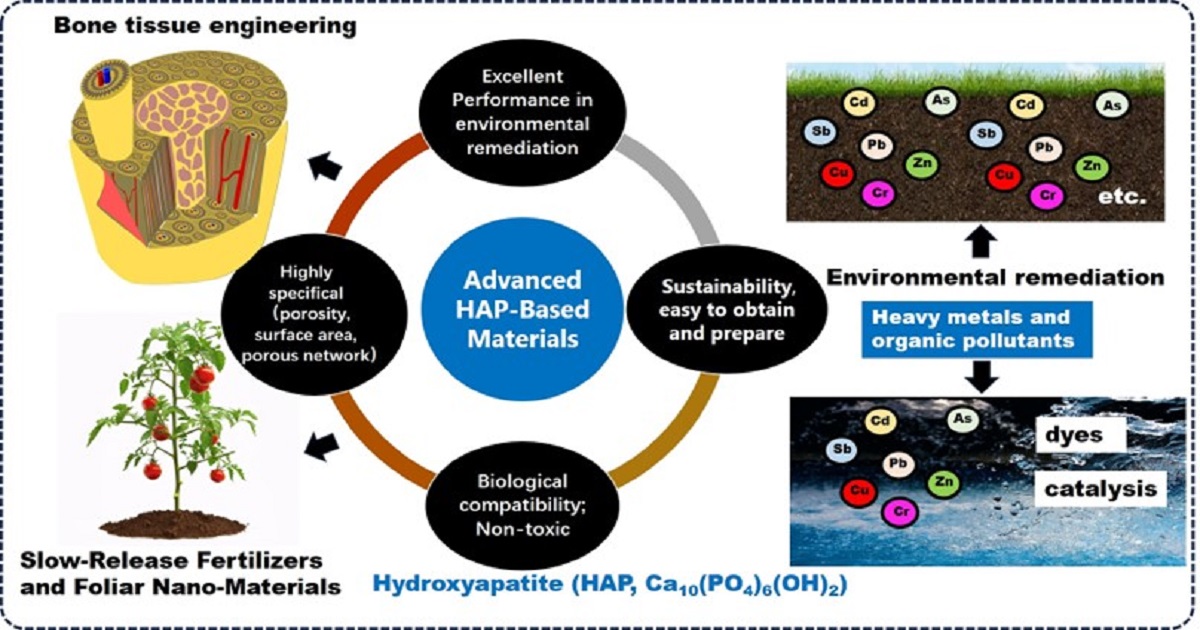Advancements in Hydroxyapatite-Based Materials
A special issue of Materials (ISSN 1996-1944). This special issue belongs to the section "Materials Chemistry".
Deadline for manuscript submissions: 10 February 2026 | Viewed by 19

Special Issue Editors
Interests: environmentally functional materials; soil remediation; heavy metals; hydroxyapatite-modified biochar/hydrochar composites; phytoremediation; waste treatment and disposal
Interests: environmental behaviors of pollutants; phosphorus-related materials; soil remediation; water pollution control; waste treatment and disposal
Special Issue Information
Dear Colleagues,
Hydroxyapatite (HAP)-based materials have gained significant attention in biomedical, environmental, and engineering applications due to their excellent biocompatibility, bioactivity, and tunable physicochemical properties. Research in this field spans synthesis methods; structural modifications; mechanical, physicochemical, and biological characterization; and innovative applications in biomedicine, environmental remediation, catalysis, optics, and heritage conservation. The growing demand for advanced HAP-based materials has motivated researchers to explore novel fabrication techniques, composite designs, and functionalization strategies to enhance performance. This Special Issue in Materials serves as a platform for high-quality research on HAP-based materials, covering topics such as the following:
- Novel synthesis and modification approaches (e.g., nano-HAP, doped/composite HAP);
- Structural, mechanical, and biological property evaluation;
- Multifunctional applications in biomedicine, environmental remediation, catalysis, optics, and heritage conservation;
- Advanced characterization and computational modeling.
We invite contributions that address the fundamental and applied aspects of HAP materials, fostering interdisciplinary collaboration and innovation.
We look forward to receiving your contributions.
Dr. Jiang Xiao
Prof. Dr. Shitong Yang
Guest Editors
Manuscript Submission Information
Manuscripts should be submitted online at www.mdpi.com by registering and logging in to this website. Once you are registered, click here to go to the submission form. Manuscripts can be submitted until the deadline. All submissions that pass pre-check are peer-reviewed. Accepted papers will be published continuously in the journal (as soon as accepted) and will be listed together on the special issue website. Research articles, review articles as well as short communications are invited. For planned papers, a title and short abstract (about 100 words) can be sent to the Editorial Office for announcement on this website.
Submitted manuscripts should not have been published previously, nor be under consideration for publication elsewhere (except conference proceedings papers). All manuscripts are thoroughly refereed through a single-blind peer-review process. A guide for authors and other relevant information for submission of manuscripts is available on the Instructions for Authors page. Materials is an international peer-reviewed open access semimonthly journal published by MDPI.
Please visit the Instructions for Authors page before submitting a manuscript. The Article Processing Charge (APC) for publication in this open access journal is 2600 CHF (Swiss Francs). Submitted papers should be well formatted and use good English. Authors may use MDPI's English editing service prior to publication or during author revisions.
Keywords
- HAP-based composites
- advanced preparation method
- biomedical materials
- environmental remediation
- catalytic carrier
- optical applications
- heritage conservation
Benefits of Publishing in a Special Issue
- Ease of navigation: Grouping papers by topic helps scholars navigate broad scope journals more efficiently.
- Greater discoverability: Special Issues support the reach and impact of scientific research. Articles in Special Issues are more discoverable and cited more frequently.
- Expansion of research network: Special Issues facilitate connections among authors, fostering scientific collaborations.
- External promotion: Articles in Special Issues are often promoted through the journal's social media, increasing their visibility.
- Reprint: MDPI Books provides the opportunity to republish successful Special Issues in book format, both online and in print.
Further information on MDPI's Special Issue policies can be found here.







